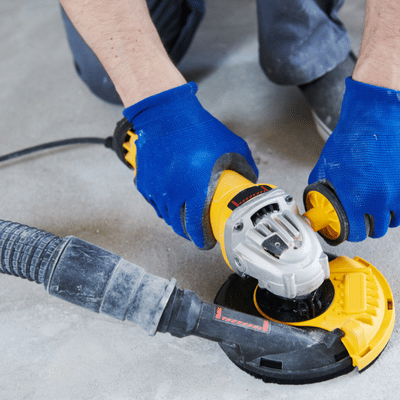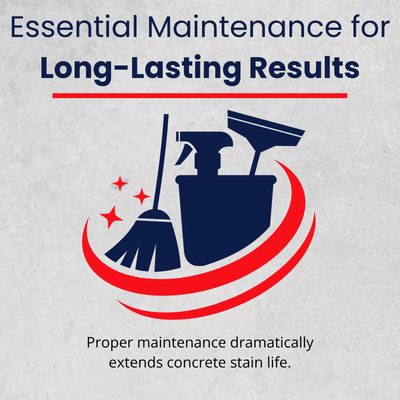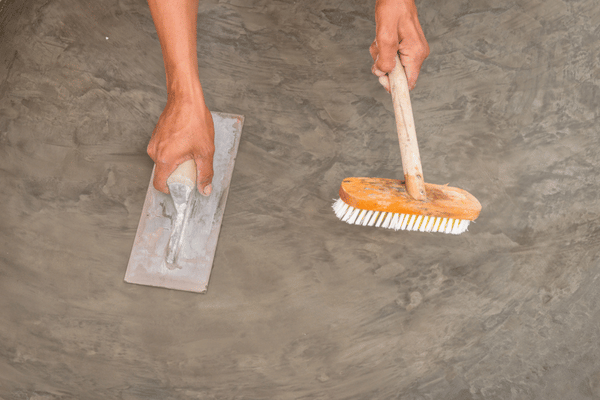Stained concrete floors offer beauty that owners love, and their concrete durability and fade resistance impress. But how long does concrete stain actually last? The answer depends on several factors, yet with proper care, your stained concrete can keep its color for decades without discoloration.
When applied correctly, concrete acid stain penetrates deep into the pores, forming a permanent bond. Quality sealers lock in colour and guard against moisture, preventing discoloration, while cleaning keeps the finish vivid. This approach is more durable than surface coatings that peel or chip away.

Unlike paint that sits on top, concrete stain works by soaking into the concrete surface. The stain color becomes part of the concrete surface color itself. This process makes the finish incredibly resilient against discoloration.
Quality stain manufacturers design their products to bond chemically with the concrete. This creates a permanent change that won't flake off or cause discoloration under normal use. The result is concrete floors that keep their vibrant appearance for years.
Most concrete acid stain jobs can last 20 to 30 years or more. Concrete acid stain lasts. Some well-maintained floors still look great after decades of use. The key is proper installation and regular care.
Different staining types offer varying longevity. Here's what you can expect:
Acid Stains: These create the longest-lasting results. Concrete acid stain chemically reacts with minerals in the concrete. This reaction produces permanent color changes that resist fading and UV damage. Most concrete acid stains maintain their appearance for 20-30 years with minimal maintenance.
Water-Based Stains: These deposit color pigments in the concrete pores without a chemical reaction. They offer excellent color choices but may need resealing more often. Expect 10-15 years of vibrant color outdoors, longer indoors.
Concrete Dyes: These create the most vivid colors but have shorter lifespans. They're best for indoor use since UV exposure can cause faster fading.
The life expectancy varies based on your specific situation. Indoor applications typically last longer than outdoor ones due to reduced weather exposure.

Several elements determine how long your concrete stain will maintain its appearance:
Product Quality: High-quality stains from reputable stain manufacturers resist fading better than cheap alternatives. Premium products include UV stability features that protect against sun damage.
Surface Preparation: Proper concrete prep before staining is crucial. The surface must be clean and porous for good stain penetration. Poor surface preparation leads to weak bonding and early discoloration.
Application Techniques: Skilled installation makes a huge difference. Professional contractors know how to apply stain evenly and allow proper reaction time. This ensures the concrete staining process creates lasting results.
Sealing and Protection: A quality concrete sealer protects the stain from wear and weather. Topcoat protection acts as a barrier against foot traffic, moisture, and UV damage. Without proper sealing, even the best stain will degrade faster.
Traffic and Use: Heavy foot traffic levels create more surface wear through abrasion. Commercial concrete applications face more stress than residential floors. High-use areas may need additional protection or more frequent maintenance.
Climate Conditions: Weather conditions significantly impact outdoor concrete surfaces. Intense sun exposure, temperature swings, and moisture all affect longevity. UV exposure slowly breaks down some stain types over time.
Maintenance Routine: Regular care keeps stains looking fresh. Simple cleaning and periodic resealing prevent most durability problems.

Proper maintenance dramatically extends concrete stain life. Follow these practices:
Regular Cleaning: Sweep concrete floors often to remove dirt and debris. Use pH-neutral cleaners for wet mopping. Harsh chemicals can damage both the stain and sealer.
Resealing Schedule: Plan to reseal outdoor surfaces every 1-2 years. Indoor floors need resealing every 3-5 years. Watch for water that no longer beads on the surface - this signals it's time to reseal.
Protect High-Traffic Areas: Use mats at entrances and under furniture. This reduces direct wear on the stained surface. Felt pads under chair legs prevent scratching.
Address Issues Quickly: Clean spills promptly to prevent staining or discoloration. Fix small problems before they become major repairs.
Professional Inspection: Have your floors checked annually. Experts can spot early signs of sealant wear or other issues.

To get the most from your concrete staining project, focus on quality from start to finish. Choose experienced contractors who understand proper surface preparation and application techniques.
Invest in high-grade sealers that offer UV stability and weather resistance. This protection is especially important in challenging climates with intense sun or temperature extremes.
Set realistic expectations for your specific situation. Indoor floors in low-traffic areas may never need re-staining. Outdoor surfaces in harsh weather will require more attention.
The concrete staining process creates beautiful, durable floors when done correctly. With proper care, your stained concrete can provide decades of enjoyment.
Stained concrete offers exceptional longevity compared to many flooring options. The combination of permanent color penetration and protective sealing creates surfaces that resist wear and tear, fading, and discoloration.
Whether you're planning a residential patio or commercial space, understanding these durability factors helps you make smart choices. Quality materials, skilled installation, and regular maintenance ensure your concrete floors will look stunning for years to come.
Don't wait to upgrade your concrete surfaces. Contact a professional concrete staining contractor today to discuss your project and learn how proper installation and care can maximize your floor's lifespan.

